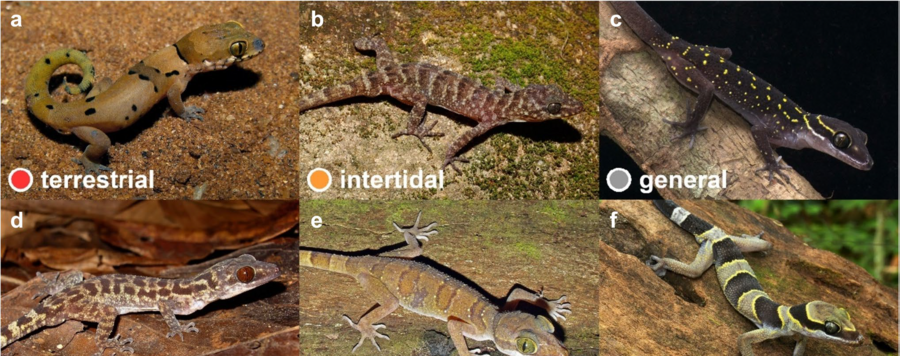
Ecomorphology of the Locomotor Apparatus in the Genus Cyrtodactylus (Gekkota, Squamata)
Adaptive radiations garner considerable interest from evolutionary biologists. Lizard radiations diversifying along structural niche space often exhibit distinct changes in body and limb proportions. One prediction is that terrestrial species inhabiting open habitats will have relatively longer hindlimbs, associated with faster running speeds, while scansorial species will have relatively shorter limbs to keep the centre of mass closer to the substratum. Alternatively, terrestrial species in densely vegetated habitats could benefit from relatively shorter limbs to prevent entanglement with more frequently encountered obstacles, whereas scansorial species could benefit from longer limbs promoting greater limb spans and static stability. Cyrtodactylus, an ecologically diverse gekkonid genus, includes numerous specialists with narrow structural niches, but the degree of morphological diversification exhibited by these specialists is largely unknown. We investigated associations between locomotor morphology and structural microhabitat use in Cyrtodactylus to test if either of the opposing predictions can be corroborated for this radiation. We measured body length and relative limb dimensions of 87 species, covering multiple independent transitions among structural microhabitat preferences. Using these data, we reconstructed the phylomorphospace and tested for associations between structural microhabitat niche and limb morphology. We found strong separation between structural niche groups in accordance with the second hypothesis, although overlap is evident among functionally related niches such as those of granite and karst specialists.






